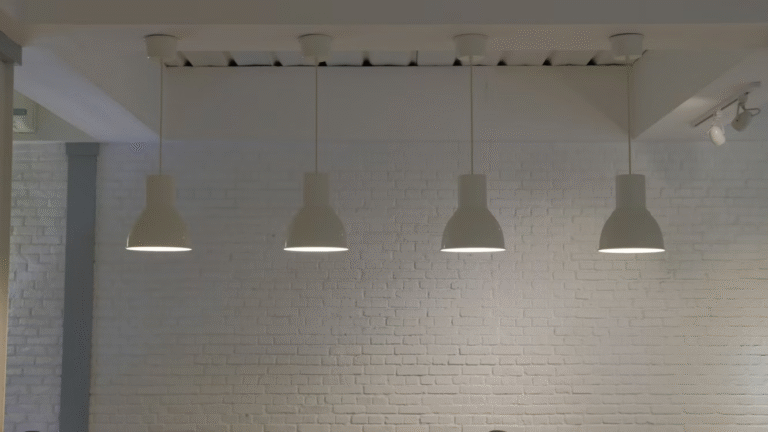Lighting establishes functionality and mood in a house. It is particularly problematic to install lights in places of limited accessibility such as high ceiling areas, staircases, exterior facades of buildings. Any little slip can lead to electrical hazard or harm. Precautionary installation work is required.
The process is smooth and risk-free with proper planning, the correct equipment and safety awareness. You can change or maintain fixtures, but understand how to work safely at height, and you can achieve the best results at the same time as being safe.
Assess the Area Before Installation
Check the space beforehand. Measure height, determine the type of surface, and select the appropriate piece of furniture. This assures you are equipped with the proper tools and mounting equipment. Test pre-existing wiring and the weight of a fixture. Heavy lamps can be provided with strengthened brackets. Fine details such as brass wall lights must be aligned perfectly to avoid accidents and fashion faux pas. Close evaluation reduces the chances of being caught off the guard during installation.
Use the Right Tools and Equipment
Use the correct equipment when working on a ladder. Maintain a heavyweight ladder or scaffolding on solid ground. Never use improvised platforms or leaning ladders on uneven ground. In very high jobs, have professionals hired with the right gear and safety harnesses. Electrical work should be done with insulated screwdrivers and pliers. This reduces shock risk. Also, you should always switch off the main power first.
Plan for Electrical Safety
Electricity is dangerous. The first thing to do is to find the appropriate circuit and ensure that it is not on by using a voltage tester. Do not work with wet hands or in wet places. When wiring appears to be damaged or aged, seek the services of a certified electrician. Pre-wire in difficult access points, as this saves time and establishes connections. Ensure that the voltage and the wattage of the fitting is not more than your supply to prevent overload.
Secure the Fixture Correctly
Stability of the fixture influences its safety and life. Install mounting brackets and mount screws in a way that gives the weight of the light. With angled or sloping ceilings, even mounts should be used to align. This minimizes stress on the fixing and maintains its appearance. Remember, tighten all connections slowly. Excessive tightness can spoil sensitive components; loose screws can result in flickering or create a falling risk.
Test and Final Adjustments
Once the installation is complete, restore power and test the lighting. Check switches and dimmers. Keep an eye on flickering or strange sounds as this could indicate a loose connection. In the event that the arms of the fixture are adjustable or have head rotation, position at the desirable angle. Check outdoor or high ceiling lights which may have accrued dust and moisture at regular intervals.
Conclusion
Light installations in difficult places demand preparation and attention to safety. With the right equipment, a steady power supply and careful attention to stray electricity, you can light even the hardest to reach areas, safely and very aesthetically. Each lighted space should be well considered and properly implemented. Patience is a virtue – if you would rather be safe than sorry, have a professional install a permanent lighting system.
